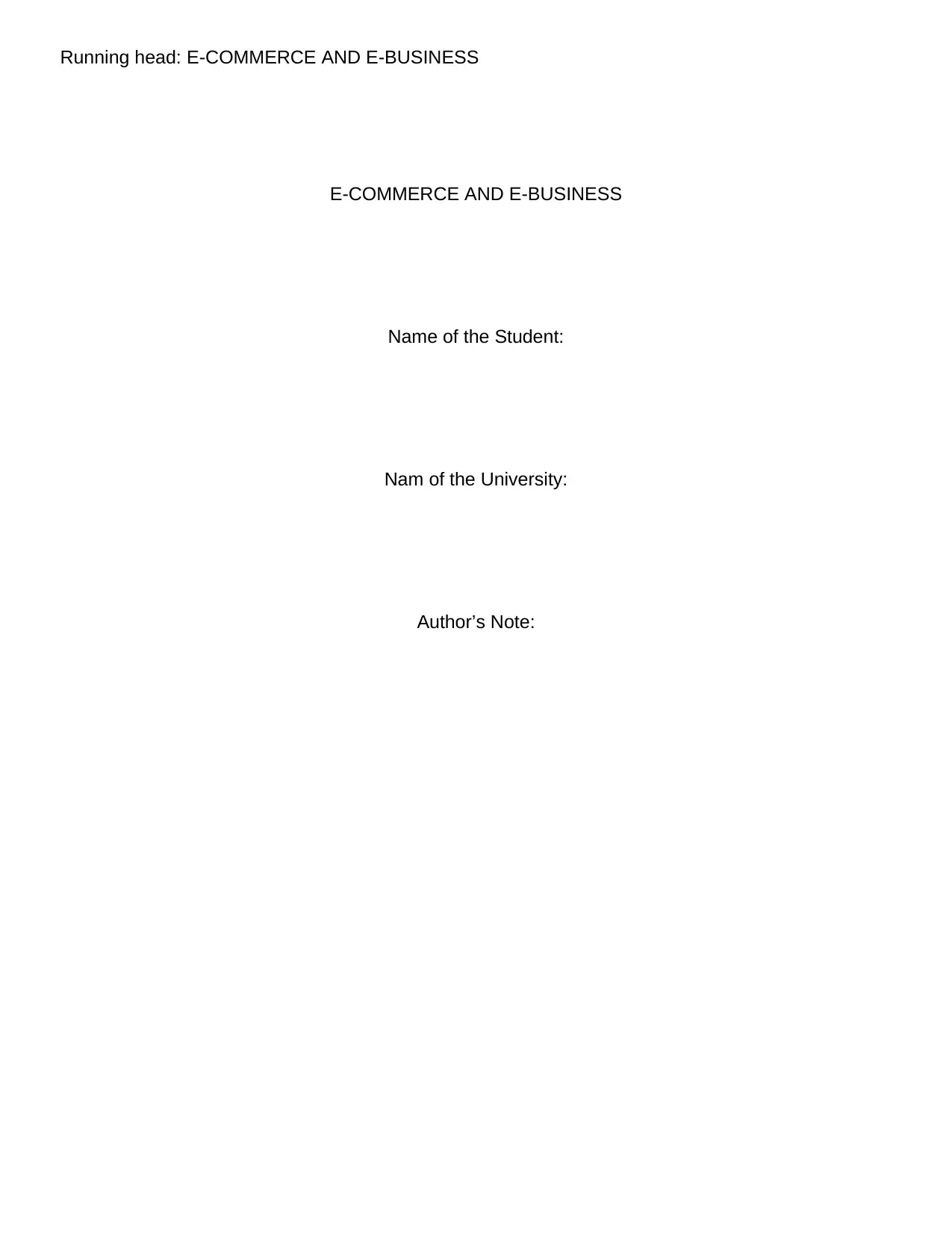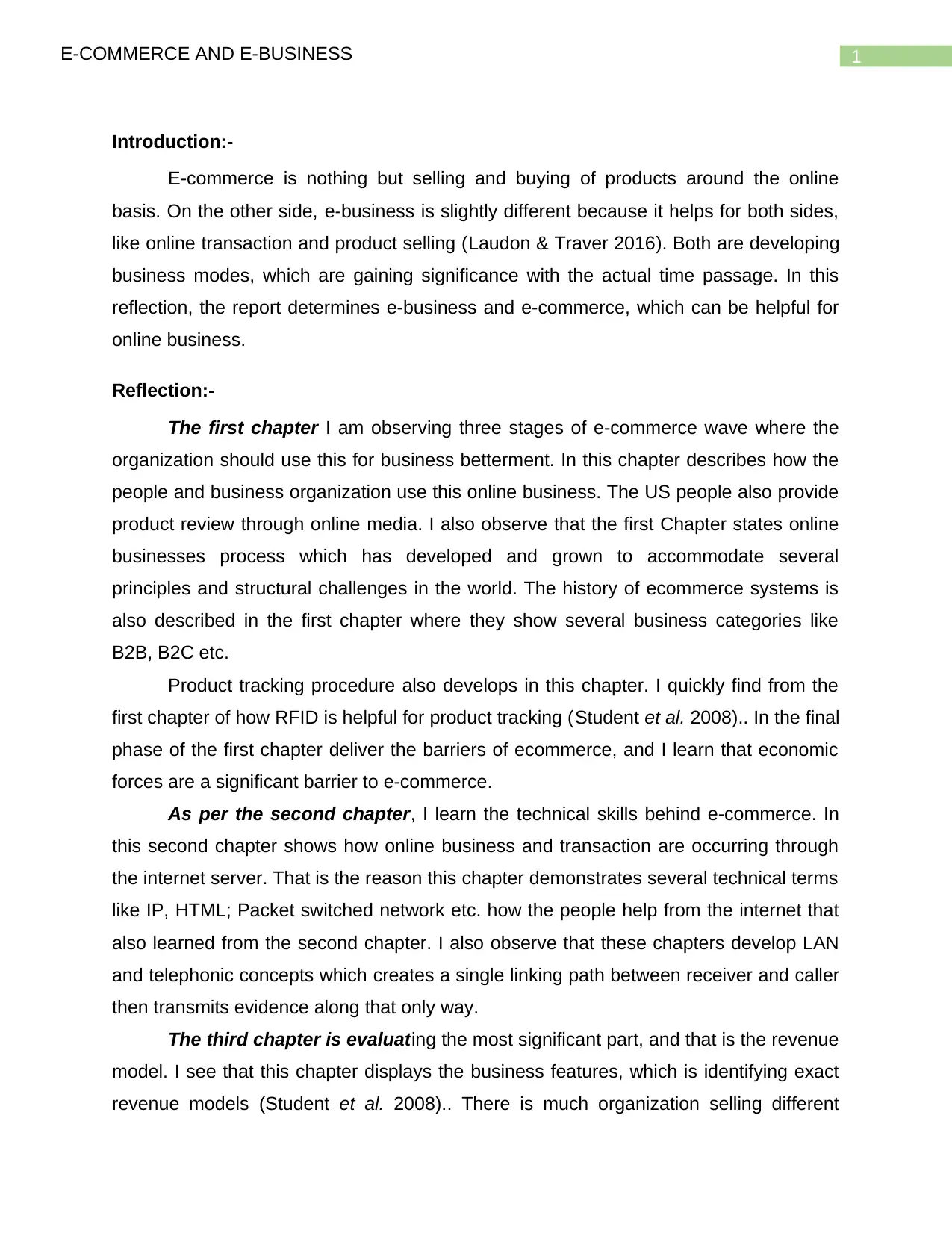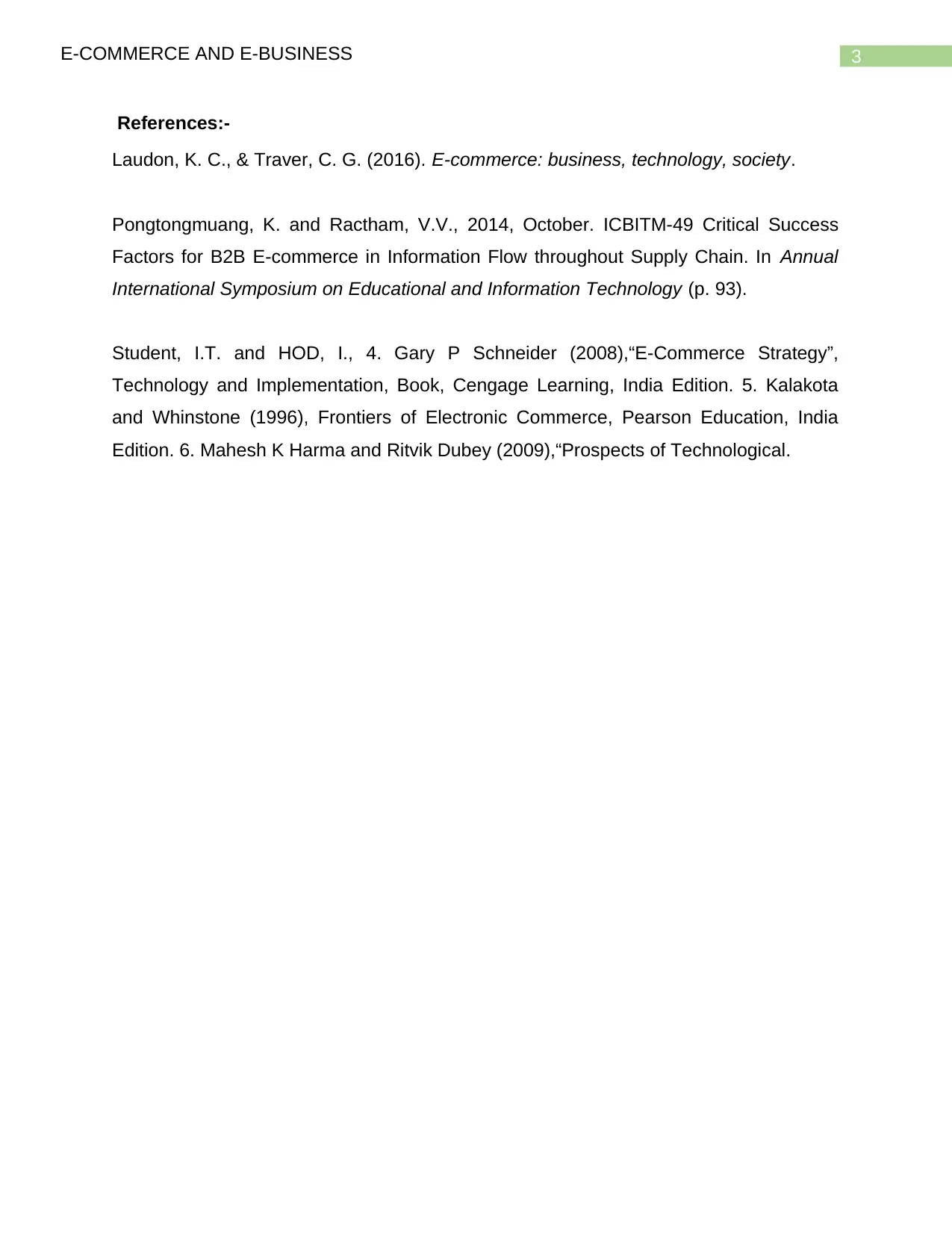BIY3004/ISY301: E-Commerce & E-Business Reflection Report
VerifiedAdded on 2022/08/31
|4
|874
|26
Report
AI Summary
This report presents a student's reflection on the e-commerce and e-business module, covering topics from the initial stages of online business to advanced strategies. The reflection analyzes various aspects, including e-commerce waves, B2B and B2C models, product tracking, and the barriers to e-commerce. It delves into technical skills, revenue models, online business strategies, customer relationship life cycles, online advertising, supply chain management, and the impact of social networking. The report also highlights the importance of understanding revenue models, online marketing, and the integration of social media for business development. The student reflects on the key takeaways from each chapter and the practical application of these concepts in the real world, concluding with an overview of the discussed topics and their importance in the field of e-commerce and e-business. The report is based on the course material, including the chapters on social networking, revenue models, online marketing, business-to-business activities, and mobile commerce.
1 out of 4









![[object Object]](/_next/static/media/star-bottom.7253800d.svg)